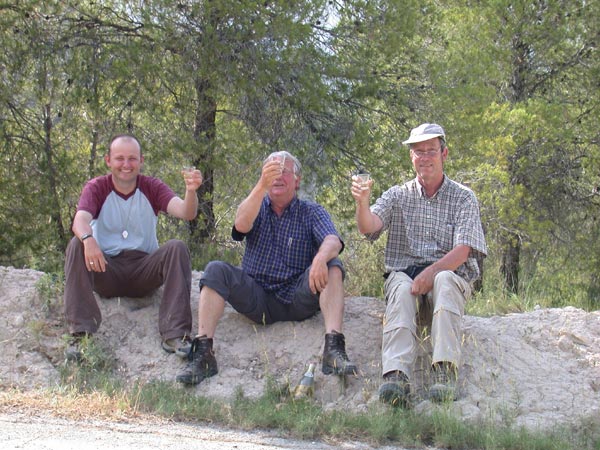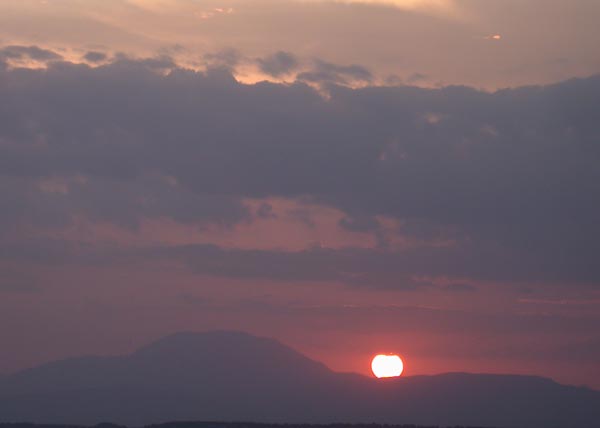|

We climbed up the North face of the screes of the Gabar and of course we had forgotten how high the Cueva was. It seemed such an easy climb! However, just before sunset we were there and watched the sun go down........ But NOT right over the middle of the Sagra mountain! What had gone wrong? fooled my memory? Sure, in hindsight I saw in
1972 the sun go down after we got back from the cave, since
we had to drive back and be in Maria in time for dinner. So I must
have seen the sun go down on the way back! Great idea. Now one of our students has to calculate where the sun should go down ?20.000 years ago. Or may be, even better. Fascinating! Look here for some possible solutions
Now look here for the foto shoot of the whole journey.
|
 |
| A toast on the K/T boundary of the Barranco del Gredero! |
| The K/T boundary in the Barranco del Gredero |
 |
| How sad..... the sun refused to set right across the middle of the Sagra |
| Midsummer worship of the sun by prehistoric man, in the Paleolithic,
?7.000-42.000 years ago Southern Spain ! The Summer Solstice 21ST OF JUNE EXPERIMENT 2006 (here for images) |
After this well-earned drink, we went on to Zarzadilla de Ramos and the Embalse de Valdeinfierno, but we lost the road. So much had been built since 1972! We reached the Embalse, and lost the road again! The road to Maria has almost been abandoned, which made it almost impossible to navigate to the Almoyas and beyond. With some hair-raising driving along washed-out gullies we finally reached the safe road, and climbed the camino forestal around the Gabar. About time, as sunset was approaching!
|